Determinants of renewable energy sources in Pakistan: An overview
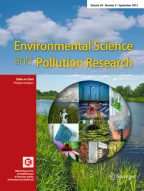
For successive economic growth of any society, sustainable energy plays a pivotal role. Considering this view, developing countries are facing serious challenges of energy at the present time. However, policymakers have outlined numerous policies to satisfy energy demand but still remain incapable to fill the gap between demand and supply. At a halt, 11% of the world population lacks access to different formulae of energy supply and access. Additionally, in different time periods, distinct policies have erupted for the progress of renewable energy. It includes especially those households of the far-flung areas having no gas and electricity availability. However, the basis of this research study is to determine the significant renewable energy source for Pakistan’s economy with the economic benefits such as job creation in energy sector. This research study aims in finding ways to secure energy supplies and achieving economic benefits. The research study concludes by engaging renewable energy technologies with the least operational and externality cost that is the utmost choice in the future. In policy perspective, Pakistani government should take actions in favor of renewable energy and technological innovation that necessitates biomass resources to be tied to non-sustainable prolonged investments.
This is a preview of subscription content, log in via an institution to check access.
Access this article
Subscribe and save
Springer+ Basic
€32.70 /Month
- Get 10 units per month
- Download Article/Chapter or eBook
- 1 Unit = 1 Article or 1 Chapter
- Cancel anytime
Buy Now
Price includes VAT (France)
Instant access to the full article PDF.
Rent this article via DeepDyve
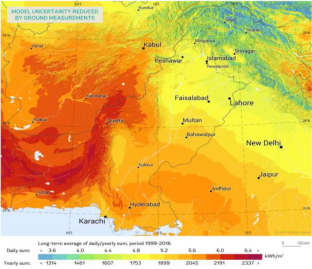
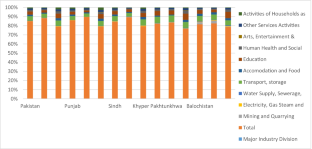
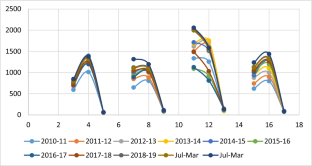
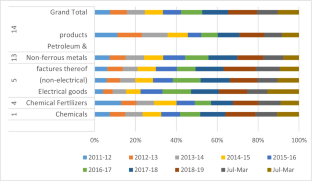
Similar content being viewed by others
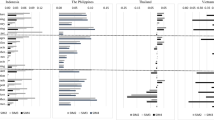
Development of renewable electricity in ASEAN countries: socio-economic and environmental impacts
Article 23 June 2021

Scope of Renewable Energy Intervention for Energy Sufficiency in Nagaland
Chapter © 2021
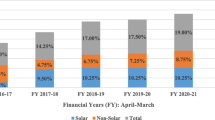
Renewable energy for sustainable development in India: current status, future prospects, challenges, employment, and investment opportunities
Article Open access 07 January 2020
Explore related subjects
Data availability
The datasets used and/or analyzed during the current study are available from the corresponding author on reasonable request.
Abbreviations
Internal combustion engines
Greenhouse gas emissions
Multi-criteria decision analysis
Gross domestic product
Small hydro energy
Municipal solid wastages energy
Total final energy consumption
Aerospace Center Institute
Energy Sector Management Assistance Program
National Renewable Energy Laboratory
Pakistan Meteorological Department
Renewable energy sources
Alternative energy development board
National Aeronautics and Space Administration
Asian Development Bank
Oil and Gas Regulation Authority
Liquid petroleum gas
Government of Pakistan
References
- AEDB, (Alternative Energy Development Board) (2018). “Agricultural waste biomass energy potential in Pakistan,” in Proceedings of the International.
- Aized T, Shahid M, Bhatti AA, Saleem M, Anandarajah G (2018) Energy security and renewable energy policy analysis of Pakistan. Renew Sustain Energy Rev 84:155–169. https://doi.org/10.1016/j.rser.2017.05.254 ArticleGoogle Scholar
- Anwar A, Chaudhary AR, Malik S, Bassim M (2021b) Modelling the macroeconomic determinants of carbon dioxide emissions in the G-7 countries: the roles of technological innovation and institutional quality improvement. Global Business Review, 09721509211039392. https://doi.org/10.1177/09721509211039392
- Anwar A, Siddique M, Dogan E, Sharif A (2021b) The moderating role of renewable and non-renewable energy in environment-income nexus for ASEAN countries: evidence from method of moments quantile regression. Renew Energy 164:956–967. https://doi.org/10.1016/j.renene.2020.09.128ArticleGoogle Scholar
- Balsalobre-Lorente D, Ibáñez-Luzón L, Usman M, Shahbaz M (2021) The environmental Kuznets curve, based on the economic complexity, and the pollution haven hypothesis in PIIGS countries. Renew Energy. https://doi.org/10.1016/j.renene.2021.10.059ArticleGoogle Scholar
- Bilal A, Li X, Zhu N, Sharma R, Jahanger A (2022) Green Technology Innovation, Globalization, and CO2 Emissions: Recent Insights from the OBOR Economies. Sustainability 14(1):236. https://doi.org/10.3390/su14010236
- Boretti A (2020) Production of hydrogen for export from wind and solar energy, natural gas, and coal in Australia. Int J Hydrogen Energy 45(7):3899–3904. https://doi.org/10.1016/j.ijhydene.2019.12.080 ArticleCASGoogle Scholar
- Butt S, Hartmann I, Lenz V (2013) Bioenergy potential and consumption in Pakistan. Biomass Bioenerg 58:379–389. https://doi.org/10.1016/j.biombioe.2013.08.009ArticleGoogle Scholar
- Chien F, Anwar A, Hsu CC, Sharif A, Razzaq A, Sinha A (2021) The role of information and communication technology in encountering environmental degradation: proposing an SDG framework for the BRICS countries. Technol Soc 65:101587. https://doi.org/10.1016/j.techsoc.2021.101587ArticleGoogle Scholar
- Child M, Koskinen O, Linnanen L, Breyer C (2018) Sustainability guardrails for energy scenarios of the global energy transition. Renew Sustain Energy Rev 91:321–334. https://doi.org/10.1016/j.rser.2018.03.079ArticleGoogle Scholar
- Dagar V, Khan MK, Alvarado R, Usman M, Zakari A, Rehman A, . Tillaguango B (2021) Variations in technical efficiency of farmers with distinct land size across agro-climatic zones: evidence from India. J Clean Prod 315:128109. https://doi.org/10.1016/j.jclepro.2021.128109
- Duffie JA, BeckmanWA, Blair N (2020) Solar engineering of thermal processes, photovoltaics and wind. John Wiley & Sons. https://books.google.com.pk/books?id=4vXPDwAAQBAJ&printsec=frontcover&source=gbs_ge_summary_r&cad=0#v=onepage&q&f=false
- Geological Survey of Pakistan (2015) “Geological survey of Pakistan,” 2015
- Global Solar Atlas (2019) Global Solar Atlas 2.0, Solar resource maps of Pakistan. https://solargis.com/maps-and-gis-data/download/pakistan. (Accessed: 12-August-2021)
- Gondal IA, Masood SA, Khan R (2018) Green hydrogen production potential for developing a hydrogen economy in Pakistan. Int J Hydrogen Energy 43(12):6011–6039. https://doi.org/10.1016/j.ijhydene.2018.01.113ArticleCASGoogle Scholar
- Intisar RA, Yaseen MR, Kousar R, Usman M, Makhdum MSA (2020) Impact of trade openness and human capital on economic growth: a comparative investigation of Asian countries. Sustainability 12(7):2930. https://doi.org/10.3390/su12072930ArticleGoogle Scholar
- IRENA (2018) “Renewable Power Generation Costs in 2018
- Ivy J (2004) Summary of electrolytic hydrogen production: milestone completion report (No. NREL/MP-560–36734). National Renewable Energy Lab., Golden, CO (US)
- Jahanger A, Usman M, Ahmad P (2021b) A step towards sustainable path: the effect of globalization on China’s carbon productivity from panel threshold approach. Environ Sci Pollut Res 1-16. https://doi.org/10.1007/s11356-021-16317-9.
- Jahanger, A., Usman, M., & Balsalobre-Lorente, D. (2021a). Autocracy, democracy, globalization, and environmental pollution in developing world: fresh evidence from STIRPAT model. Journal of Public Affairs, e2753. https://doi.org/10.1002/pa.2753
- Johansson PO, Kriström B (2019) Welfare evaluation of subsidies to renewable energy in general equilibrium: theory and application. Energy Economics 83:144–155. https://doi.org/10.1016/j.eneco.2019.06.024ArticleGoogle Scholar
- Jun W, Mughal N, Zhao J, Shabbir MS, Niedbała G, Jain V, Anwar A (2021) Does globalization matter for environmental degradation? Nexus among energy consumption, economic growth, and carbon dioxide emission. Energy Policy 153(3):112230. https://doi.org/10.1016/j.enpol.2021.112230ArticleGoogle Scholar
- Kamal M, Usman M, Jahanger A, Balsalobre-Lorente D (2021) Revisiting the role of fiscal policy, financial development, and foreign direct investment in reducing environmental pollution during globalization mode: evidence from linear and nonlinear panel data approaches. Energies 14(21):6968. https://doi.org/10.3390/en14216968ArticleCASGoogle Scholar
- Kamran M (2018) Current status and future success of renewable energy in Pakistan. Renew Sustain Energy Rev 82:609–617. https://doi.org/10.1016/j.rser.2017.09.049ArticleGoogle Scholar
- Khalid K, Usman M, Mehdi MA (2021) The determinants of environmental quality in the SAARC region: a spatial heterogeneous panel data approach. Environ Sci Pollut Res 28(6):6422–6436. https://doi.org/10.1007/s11356-020-10896-9ArticleGoogle Scholar
- Khan AA, Ahmed Z, Siddiqui MA (2012) Issues with solid waste management in South Asian countries: a situational analysis of Pakistan. Journal of Environmental and Occupational Health 1(2):129–131 Google Scholar
- Korai MS, Mahar RB, Uqaili MA (2017) The feasibility of municipal solid waste for energy generation and its existing management practices in Pakistan. Renew Sustain Energy Rev 72:338–353. https://doi.org/10.1016/j.rser.2017.01.051ArticleCASGoogle Scholar
- Krmac E, Djordjević B (2019) A new DEA model for evaluation of supply chains: a case of selection and evaluation of environmental efficiency of suppliers. Symmetry 11(4):565. https://doi.org/10.3390/sym11040565ArticleGoogle Scholar
- Mohsin M, Rasheed AK, Saidur R (2018) Economic viability and production capacity of wind generated renewable hydrogen. Int J Hydrogen Energy 43(5):2621–2630. https://doi.org/10.1016/j.ijhydene.2017.12.113ArticleCASGoogle Scholar
- Nejat P, Jomehzadeh F, Taheri MM, Gohari M, Majid MZA (2015) A global review of energy consumption, CO2 emissions and policy in the residential sector (with an overview of the top ten CO2 emitting countries). Renew Sustain Energy Rev 43:843–862. https://doi.org/10.1016/j.rser.2014.11.066ArticleCASGoogle Scholar
- Qader MR, Khan S, Kamal M, Usman M, Haseeb M (2021) Forecasting carbon emissions due to electricity power generation in Bahrain. Environ Sci Pollut Res 1-12. https://doi.org/10.1007/s11356-021-16960-2
- Qayyum M, Ali M, Nizamani MM, Li S, Yu Y, Jahanger A (2021) Nexus between financial development, renewable energy consumption, technological innovations and CO2 emissions: the case of India. Energies 14(15):4505. https://doi.org/10.3390/en14154505ArticleCASGoogle Scholar
- Ramzan M, Raza SA, Usman M, Sharma GD, Iqbal HA (2021) Environmental cost of non-renewable energy and economic progress: do ICT and financial development mitigate some burden?. J Clean Prod 130066. https://doi.org/10.1016/j.jclepro.2021.130066
- Ramzan M, Iqbal HA, Usman M, Ozturk I (2022) Environmental pollution and agricultural productivity in Pakistan: new insights from ARDL and wavelet coherence approaches. Environ Sci Pollut Res 1–20. https://doi.org/10.1007/s11356-021-17850-3
- Raza MY, Wasim M, Sarwar MS (2020) Development of renewable energy technologies in rural areas of Pakistan. Energy Sources, Part a: Recovery, Utilization, and Environmental Effects 42(6):740–760. https://doi.org/10.1080/15567036.2019.1588428ArticleGoogle Scholar
- Rehman A, Chandio AA, Hussain I, Jingdong L (2019) Fertilizer consumption, water availability and credit distribution: major factors affecting agricultural productivity in Pakistan. J Saudi Soc Agric Sci 18(3):269–274. https://doi.org/10.1016/j.jssas.2017.08.002ArticleGoogle Scholar
- Ren J, Ren X (2018) Sustainability ranking of energy storage technologies under uncertainties. J Clean Prod 170:1387–1398. https://doi.org/10.1016/j.jclepro.2017.09.229ArticleGoogle Scholar
- Renewable Energy (2007) “Renewable energy road map. Renewable energies in the 21st century
- Salem S, Arshed N, Anwar A, Iqbal M, Sattar N (2021) Renewable energy consumption and carbon emissions—testing nonlinearity for highly carbon emitting countries. Sustainability 13(21):11930. https://doi.org/10.3390/su132111930ArticleCASGoogle Scholar
- Shah SAA, Solangi YA (2019) A sustainable solution for electricity crisis in Pakistan: opportunities, barriers, and policy implications for 100% renewable energy. Environ Sci Pollut Res 26(29):29687–29703. https://doi.org/10.1007/s11356-019-06102-0ArticleGoogle Scholar
- Solangi YA, Tan Q, Mirjat NH, Valasai GD, Khan MWA, Ikram M (2019) An integrated Delphi-AHP and fuzzy TOPSIS approach toward ranking and selection of renewable energy resources in Pakistan. Processes 7(2):118. https://doi.org/10.3390/pr7020118ArticleGoogle Scholar
- Stökler S, Schillings C, Kraas B (2016) Solar resource assessment study for Pakistan. Renew Sustain Energy Rev 58:1184–1188. https://doi.org/10.1016/j.rser.2015.12.298ArticleGoogle Scholar
- Sun Y, Anwar A, Razzaq A, Liang X, Siddique M (2021) Asymmetric role of renewable energy, green innovation, and globalization in deriving environmental sustainability: evidence from top-10 polluted countries. Renewable Energy. https://doi.org/10.1016/j.renene.2021.12.038ArticleGoogle Scholar
- Usman M, Hammar N (2021) Dynamic relationship between technological innovations, financial development, renewable energy, and ecological footprint: fresh insights based on the STIRPAT model for Asia Pacific Economic Cooperation countries. Environ Sci Pollut Res 28(12):15519–15536. https://doi.org/10.1007/s11356-020-11640-zArticleGoogle Scholar
- Usman M, Jahanger A (2021) Heterogeneous effects of remittances and institutional quality in reducing environmental deficit in the presence of EKC hypothesis: a global study with the application of panel quantile regression. Environmental Science and Pollution Research, 1-19. https://doi.org/10.1007/s11356-021-13216-x
- Usman M, Makhdum MSA (2021) What abates ecological footprint in BRICS-T region? Exploring the influence of renewable energy, non-renewable energy, agriculture, forest area and financial development. Renewable Energy 179:12–28. https://doi.org/10.1016/j.renene.2021.07.014ArticleGoogle Scholar
- Usman M, Kousar R, Makhdum MSA (2020a) The role of financial development, tourism, and energy utilization in environmental deficit: evidence from 20 highest emitting economies. Environ Sci Pollut Res 27(34):42980–42995. https://doi.org/10.1007/s11356-020-10197-1ArticleGoogle Scholar
- Usman M, Kousar R, Yaseen MR, Makhdum MSA (2020b) An empirical nexus between economic growth, energy utilization, trade policy, and ecological footprint: a continent-wise comparison in upper-middle-income countries. Environ Sci Pollut Res 27(31):38995–39018. https://doi.org/10.1007/s11356-020-09772-3ArticleGoogle Scholar
- Usman M, Makhdum MSA, Kousar R (2020c) Does financial inclusion, renewable and non-renewable energy utilization accelerate ecological footprints and economic growth? Fresh evidence from 15 highest emitting countries. Sustain Cities Soc 65:102590. https://doi.org/10.1016/j.scs.2020.102590ArticleGoogle Scholar
- Usman M, Yaseen MR, Kousar R, Makhdum MSA (2021a) Modeling financial development, tourism, energy consumption, and environmental quality: is there any discrepancy between developing and developed countries?. Environmental Science and Pollution Research, 1-22. https://doi.org/10.1007/s11356-021-14837-y
- Usman M, Jahanger A, Makhdum MSA, Balsalobre-Lorente D, Bashir A (2021b) How do financial development, energy consumption, natural resources, and globalization affect Arctic countries’ economic growth and environmental quality? An advanced panel data simulation. Energy. https://doi.org/10.1016/j.energy.2021.122515
- Usman M, Khalid K, Mehdi MA (2021c) What determines environmental deficit in Asia? Embossing the role of renewable and non-renewable energy utilization. Renew Energy 168:1165–1176. https://doi.org/10.1016/j.renene.2021.01.012ArticleGoogle Scholar
- Usman M, Anwar S, Yaseen MR, Makhdum MSA, Kousar R, Jahanger A (2021d) Unveiling the dynamic relationship between agriculture value addition, energy utilization, tourism and environmental degradation in South Asia. Journal of Public Affairs, e2712. https://doi.org/10.1002/pa.2712
- Usman M, Kousar R, Makhdum MSA, Yaseen MR, Nadeem AM (2022a) Do financial development, economic growth, energy consumption, and trade openness contribute to increase carbon emission in Pakistan? An insight based on ARDL bound testing approach. Environ Dev Sustain 1–30. https://doi.org/10.1007/s10668-021-02062-z
- Usman M, Balsalobre-Lorente D, Jahanger A, Ahmad P (2022b) Pollution concern during globalization mode in financially resource-rich countries: do financial development, natural resources, and renewable energy consumption matter? Renew Energy. https://doi.org/10.1016/j.renene.2021.10.067
- Wang Y, Shah SAA, Zhou P (2018) City-level environmental performance in China. Energy Ecol Environ 3(3):149–161. https://doi.org/10.1007/s40974-018-0088-9ArticleGoogle Scholar
- World Bank (2015) World development indicators 2015. The World Bank. https://doi.org/10.1596/978-1-4648-0163-1ArticleGoogle Scholar
- Xu L, Wang Y, Solangi YA, Zameer H, Shah SAA (2019) Off-grid solar PV power generation system in Sindh, Pakistan: a techno-economic feasibility analysis. Processes 7(5):308. https://doi.org/10.3390/pr7050308ArticleCASGoogle Scholar
- Yang B, Usman M (2021) Do industrialization, economic growth and globalization processes influence the ecological footprint and healthcare expenditures? Fresh insights based on the STIRPAT model for countries with the highest healthcare expenditures. Sustain Prod Consump 28:893–910. https://doi.org/10.1016/j.spc.2021.07.020ArticleGoogle Scholar
- Yang B, Jahanger A, Khan MA (2020) Does the inflow of remittances and energy consumption increase CO 2 emissions in the era of globalization? A global perspective. Air Qual Atmos Health 13(11):1313–1328. https://doi.org/10.1007/s11869-020-00885-9ArticleCASGoogle Scholar
- Yang B, Jahanger A, Usman M, Khan MA (2021) The dynamic linkage between globalization, financial development, energy utilization, and environmental sustainability in GCC countries. Environ Sci Pollut Res 28(13):16568–16588. https://doi.org/10.1007/s11356-020-11576-4ArticleGoogle Scholar
- Yu D (2014) Hydrogen production technologies evaluation based on interval-valued intuitionistic fuzzy multiattribute decision making method. J Appl Math 2014. https://doi.org/10.1155/2014/751249
- Zaigham NA, Nayyar ZA (2010) Renewable hot dry rock geothermal energy source and its potential in Pakistan. Renew Sustain Energy Rev 14(3):1124–1129. https://doi.org/10.1016/j.rser.2009.10.002ArticleGoogle Scholar
- Zhang L, Yang B, Jahanger A (2021) The role of remittance inflow and renewable and non-renewable energy consumption in the environment: accounting ecological footprint indicator for top remittance-receiving countries. Environ Sci Pollut Res. https://doi.org/10.1007/s11356-021-16545-zArticleGoogle Scholar
- Zimmermann HJ (2011) Fuzzy set theory—and its applications. Springer Science & Business Media.https://books.google.com.pk/books?hl=en&lr=&id=HVHtCAAAQBAJ&oi=fnd&pg=PR13&dq=Zimmermann+(2011).+H.J,+Fuzzy+Set+Theory%E2%80%94and+Its+Applications.+2011.&ots=sgXfVeWqc1&sig=KxdrLEzRu0BXAn2WuZVmOt3XrL0#v=onepage&q&f=false
- Zuberi MJS, Ali SF (2015) Greenhouse effect reduction by recovering energy from waste landfills in Pakistan. Renew Sustain Energy Rev 44:117–131. https://doi.org/10.1016/j.rser.2014.12.028ArticleGoogle Scholar
Acknowledgements
The author is indebted to co-authors as well as the Home gardening, Urban jungle and Birds rehabilitation (HUB) Initiative team members for valuable suggestions and providing the author with important notes relevant to the subjects. Global energy transformation, a road map to 2050, especially the portion relevant to climate change expressed in this paper, is entirely endeavored of the HUB Initiative team.
Author information
Authors and Affiliations
- Department of Economics, Ghazi University, D G Khan, Pakistan Umar Suffian Ahmad
- Institute for Region and Urban-Rural Development, and Center for Industrial Development and Regional Competitiveness, Wuhan University, Wuhan, 430072, Hubei Province, China Muhammad Usman
- Department of Economics, Government College University Faisalabad, Faisalabad, 38000, Pakistan Muhammad Usman
- Science and Technology, Federal Urdu University of Arts, Islamabad, Pakistan Saddam Hussain
- School of Economics, Hainan University, Haikou, 570228, Hainan, China Atif Jahanger
- Business School Konkuk University, Seoul, 100011, South Korea Maira Abrar
- Umar Suffian Ahmad







